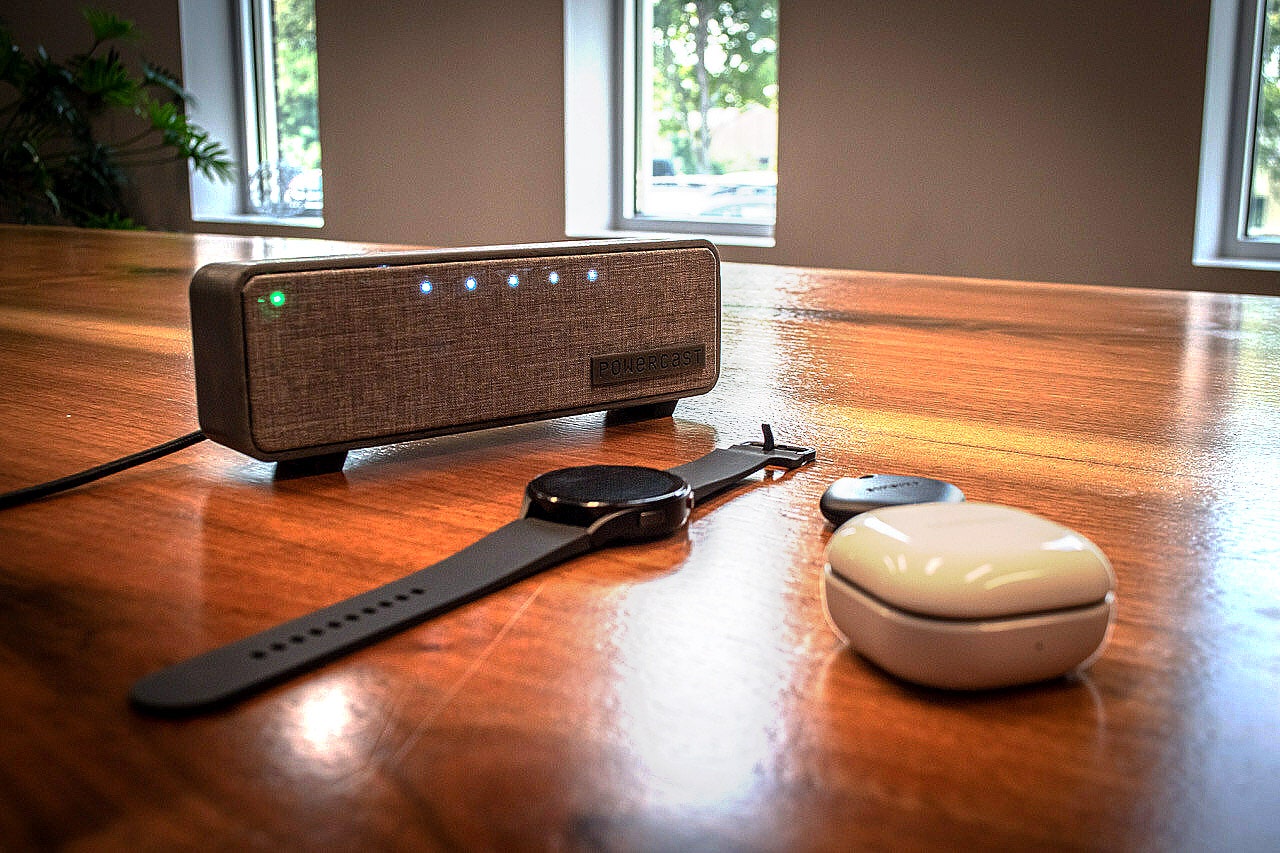The dream of devices that charge wirelessly without pads or cables shows progress each year.
At CES, the AirFuel Alliance (which includes Samsung, Huawei, and a host of wireless power players among its members) announced the first global interoperable standard for RF wireless power transfer, called AirFuel RF. It uses radio frequency waves to transmit small amounts of energy from a few inches up to a few meters.
You can charge devices without precise placement on a pad, charge awkwardly shaped gadgets like earbuds, and simultaneously charge multiple devices within range. The catch is we are still talking about tiny amounts of power suitable for things like electronic shelf labels (so they don’t need batteries), some wearables, and IoT sensors.
AirFuel competitor Powercast announced its Ubiquity RF wireless charging system, offered to manufacturers as a reference design, available for license from February or as an embeddable module and transmitter from June 2023. Powercast estimates the cost of integrating the receiver into a device at $5 and offers the Powerharvester PCC110 receiver chip and a small antenna at around $1.
What It Could Charge
Again, we are talking about a trickle charge here, but it might be suitable for things like TV remotes, keyboards and mice, game controllers, headphones, hearing aids, wearables, and smart home sensors. This kind of wireless power could also prove handy for bathroom gadgets like electric toothbrushes and shavers, where there might not be an outlet.
Ossia announced the wireless Cota Universal Base charger, which can be charged over the air with a Cota Home node and deliver power to other devices. Ossia is partnering with Marubun and Fujitsu on ePaper RFID Tags, allowing for digital displays and asset tracking that don’t require wiring or batteries.
These are small steps forward, but as I wrote last year, wireless power at a distance in our homes remains, well … distant.
Lire l’article complet sur : www.wired.com



Leave A Comment